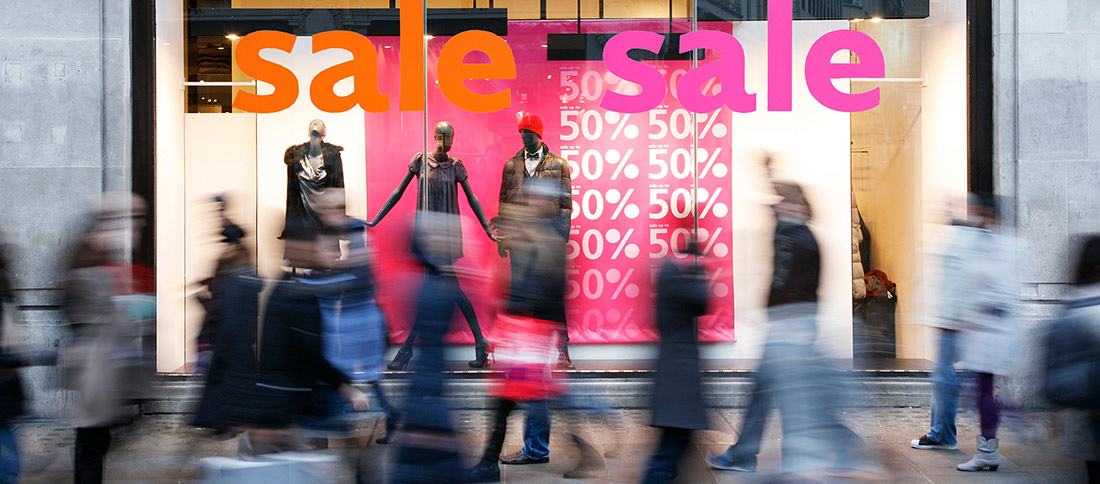Rating revaluations, what does it mean for the retail sector?

The cost of living crisis has dealt a hammer blow to the retail sector and has caused household disposable income to decline significantly in the last year. On top of this, the impacts from the pandemic are still being felt; store closures are still commonplace, with the likes of M&Co and Paperchase going into administration, and store rationalisation programmes continue. By the end of 2023, Retail Economics has forecast that retail sales volumes will fall by a further 3.5%, so there are further challenges to come across the sector. However, some good news is on the way for those operating physical stores. The impending business rates revaluation in April will result in business rates declining by an average of 10% across England and Wales, with the savings applied immediately without any transitionary period.
*Source: Valuation Office
Although most retailers will benefit from the exercise, a small percentage of locations (17%) will see an increase in retail rates. However, this rise is low and will only increase by an average of 4.9%. Also, any more significant upward rate increases will be transitional; therefore, retailers affected in these locations will only pay the rise incrementally. Typically, the locations that are seeing the largest rises include small towns and villages such as Purbeck (+19.7%), Stroud (+16.1%), and Forest of Dean (+15.8%), which are the types of locations that benefitted during the pandemic when consumers were forced to shop locally.
Some of the biggest beneficiaries will be occupiers in shopping centres, driven by the large drop in asset and rental value since the last revaluation back in 2017. Since then, shopping centres have struggled, highlighted by the collapse of Intu at the start of the pandemic. The sector also continues to be impacted by high vacancy rates (currently around 18%, according to the Local Data Company). This is particularly stark when looking at Dartford, home to Bluewater Shopping Centre, where business rates will fall by 38% - the biggest decline across all local authorities. In 2022, footfall at Bluewater was 8% lower than in 2019, demonstrating that recovery is still underway. The second highest will be in Thurrock – home to the Lakeside Shopping Centre – which will see rates fall by 34%.
*Source: Avison Young, MSCI
Department stores , or what remains of them, will also see a substantial reduction in business rates. Large (non-grocery) stores will see rates fall by over a third from £1.25bn to £0.81 bn. According to journalist Tessa Boase’s book ‘London’s Lost Department Stores’, 83% of the UK’s department stores have closed nationwide over the last six years alone. The demise of BHS and Debenhams and the shift to online shopping have meant many of these stores across UK High Streets struggle. Only the flagship stores in high footfall locations, such as Selfridges and Harrods, which can differentiate themselves and appeal to a diverse consumer base, will likely survive in the coming years.
Smaller-sized supermarkets under 30,000 sq. ft will see rates rise by 8.2%. Since 2017 over 940 new supermarkets have opened across England and Wales of this size, driven by the discounters Aldi and Lidl (opening 304 and 288 stores, respectively). Both retailers have thrived in the last five years with their market share (according to Kantar), increasing from 10.4% in 2017 to 16.3% in 2023 and expected to grow further as they continue with their ambitious expansion plans. Convenience stores will also see rates rise by 12.7%,amounting to an additional £33m. But not all grocery stores will see an increase in business rates – the large superstores (over 27,000 sq. ft) will see rates decline by almost 15%. Despite their popularity during the pandemic, there have been very few large new store openings in the last five years , driven by the big grocers (Tesco, Sainsburys, Asda and Morrisons) moving away from large store formats.
Rateable values on retail parks will decline by an average of 9.3%. As an asset class, they remain a desirable location for occupiers as rents are cheaper. They also continue to be attractive to consumers down to a number of factors, including free parking, and many of the units offer click & collect facilities. According to national data from Springboard, footfall on retail parks had returned to almost pre-pandemic levels by December 2022, highlighting the continued strength of this sector. Vacancy rates remain well below that of the other retail sectors - currently tracking at around 4.35%, with occupier demand still high. They are also popular with investors, with investment volumes for retail parks accounting for the majority of retail transaction values over the last two years. Even some of the UK’s biggest and most popular retail park assets will see rates decline at higher levels than the national average; for example, at Fosse Park in Leicester, they will fall by almost 40%.
*Source: Avison Young, Propertydata
However, it is worth pointing out that the valuation date is the 1st of April 2021, a period when the country was still under lockdown, and although values have fallen in some sub-sector retail locations it is our view that the impact of the market at that time is not fully reflected and there remains an opportunity to review and drive down values further. It is also worth noting that the large national retailers will see rates increase for other types of property assets that they occupy. Those with a sizeable online presence will see rates increase for their distribution centres, with industrial rates increasing by an average of 27%, and so some of the savings made from retail properties will be lost elsewhere. However, overall, the rating revaluations should deliver a much-needed boost for occupiers of retail property in what will prove to be yet another challenging year for the sector.
